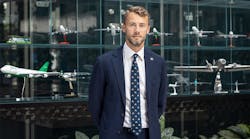Phoenix, 2 May 2016 – Solar Impulse 2 (Si2) – the solar airplane of Swiss pioneers Bertrand Piccard and André Borschberg capable of flying day and night without fuel – landed in Phoenix Goodyear Airport, Arizona, with André Borschberg at the controls, on 2 May at 8:55pm local time (UTC-7) after taking off from the Moffett Airfield in Mountain View, California, the same morning at 5:03am local time (UTC-7). The flight, that took 15 hours and 52 minutes and 745 miles (1’199 km) at a maximum altitude of 22’000 feet (6'706 meters) and average speed of 43,58 mph (70,15 km/h), is part of the attempt to achieve the first ever Round-The-World Solar Flight, the goal of which is to demonstrate how modern clean technologies can achieve the impossible. As soon as possible, weather permitting, Bertrand Piccard will pilot Si2 to the next stop-over and continue the crossing of the United States
Swiss pioneers Bertrand Piccard – Initiator and Chairman – and André Borschberg – CEO and Co-Founder – are the pilots and driving force behind Solar Impulse, the first airplane able to fly day and night without a drop of fuel – propelled solely by the sun’s energy. Supported by Main Partners Solvay, Omega, Schindler, ABB, and Official Partners Google, Altran, Covestro, Swiss Re Corporate Solutions, Swisscom and Moët Hennessy, they are attempting the first Round-The-World Solar Flight with Solar Impulse 2 (Si2) – demonstrating that clean technologies can achieve the impossible.
Si2 is a concentration of clean technologies – a genuine flying laboratory. It is a single-seater aircraft made of carbon fiber that has a 72m / 236ft wingspan (larger than a Boeing 747) for a weight of 2300kg / 5100lb (the equivalent of an empty family car). The 17,248 solar cells built into the wing power the four batteries (38.5kWh per battery) that in turn power the four electric engines (13.5kW / 17.5hp each) and the propellers with renewable energy. The plane is therefore capable of saving a maximum amount of energy during the day and flying throughout the night on batteries. Si2 requires zero fuel and has virtually unlimited autonomy: theoretically, Si2 could fly forever and is only limited by the pilot’s sustainability.


